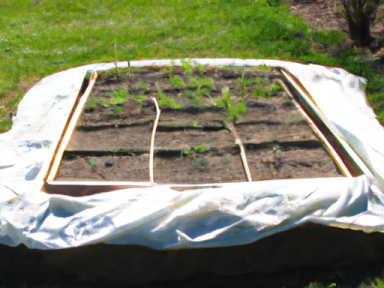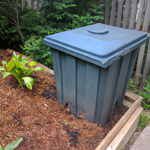Building and Using a Hot Bed: The Key to Early Planting and Self-Reliance
Imagine a world where grocery store shelves are empty, where fresh produce is a luxury only a few can afford, and where self-reliance is the only way to survive. Sound far-fetched? Unfortunately, in today’s uncertain times, it’s essential to prepare for the worst-case scenario. As an expert in homesteading, survival, and self-reliance, I am here to guide you towards building and using a hot bed to start your plants early and ensure a bountiful harvest.
What is a Hot Bed?
A hot bed is an age-old gardening technique that harnesses the power of decomposition to generate heat, allowing for the cultivation of plants well before the traditional planting season. By creating a warm and controlled environment, you can extend your growing season, get a head start on planting, and ultimately increase your chances of providing for yourself and your family in times of crisis.
Building Your Hot Bed
1. Choose the Right Location: Find an area in your backyard that receives ample sunlight, preferably facing south to maximize exposure. Make sure it’s close to a water source for easy irrigation.
2. Select the Materials: You will need a combination of fresh manure, straw, and soil to build your hot bed. Use high-nitrogen manure such as horse or chicken to accelerate the decomposition process and create the desired heat.
3. Layer Up: Start by creating a bottom layer of fresh manure about a foot thick. Follow it with a layer of straw or other organic matter, and then add a layer of soil. Repeat this process until your hot bed is about four feet tall. Ensure each layer is well compacted to allow for maximum heat retention.
4. Prep Your Planting Area: Once your hot bed is built, make a level and firm surface on top to serve as your planting area. You can use a wooden frame or simply mold the top layer of soil into a raised bed shape.
5. Monitor and Maintain: Regularly check the temperature of your hot bed using a thermometer. You want to maintain a temperature between 100-140°F (37-60°C) for optimal plant growth. If it gets too hot, vent the bed by slightly opening the top layer. If it cools down, add more fresh manure.
Using Your Hot Bed
1. Start Planting Early: With your hot bed up and running, you can now sow your favorite vegetable or flower seeds much earlier than would be possible outdoors. Follow the planting instructions for each specific plant, providing adequate spacing and depth.
2. Care for Your Seedlings: Keep a close eye on your seedlings, making sure to water them regularly and protect them from harsh weather conditions. Gradually acclimate them to outdoor conditions as the weather warms up to avoid shocking them.
3. Extend the Harvest: As the outdoor temperatures rise, you can continue using your hot bed by replacing spent plants with new seedlings. This way, you can enjoy fresh produce for an extended period compared to traditional outdoor gardening.
Conclusion
In an unpredictable world filled with potential crises, the ability to grow your own food becomes invaluable. Building and using a hot bed allows you to take control of your food supply, ensuring that you and your loved ones have access to fresh produce regardless of what lies ahead. By practicing self-reliance and learning essential homesteading skills, you can be better prepared to face any challenge that comes your way. Start now, and embrace the empowering journey towards self-sufficiency!



GIPHY App Key not set. Please check settings